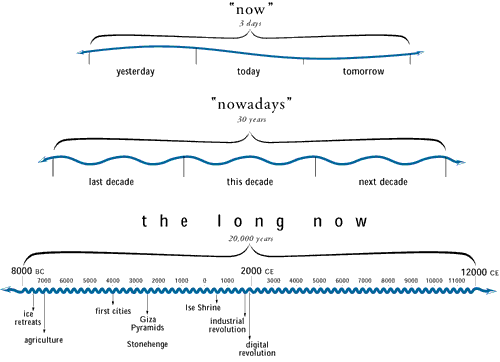 This afternoon, I was down at PlatteForum – the current installation, by one of Denver’s most original creative thinkers, Michael Ensminger, is really great fun.
This afternoon, I was down at PlatteForum – the current installation, by one of Denver’s most original creative thinkers, Michael Ensminger, is really great fun.
A city of buildings, some ten feet tall, built out of lincoln logs. A miniature trip through the Chicago loop, but with a global range of styles (as long as the styles are available as part of the miniature log home industry). No glue, just gravity.
While I was there a train passed by, and we all heard something fall off the installation. It turns out one of the asian influenced buildings lost an adornment off its roof.
Part of the installation’s charm, besides the obvious connection to the nostalgia and americana, is the temporality of the experience. The truth is, all our constructions are temporal.
Stewart Brand wrote a book published in 1994 called “How Buildings Learn”; according to Publisher’s Weekly:
All buildings are forced to adapt over time because of physical deterioration, changing surroundings and the life within–yet very few buildings adapt gracefully, according to Brand.
Some years ago, Brand started a group called The Long Now Foundation; the term was actually coined by the musician, artist, and longnow co-founder Brian Eno. The Long Now Foundation was created by some serious minds. I like this detail; The Long Now Foundation uses five digit dates, the extra zero is to solve the deca-millennium bug which will come into effect in about 8,000 years. Here is the basis of their argument.

I’m a gardener by avocation; I think in terms of seasons, and (when I’m paying attention) years. Some artists have a vision that takes them across decades. In a rare case an architect thinks of centuries. But the fact is that our viewpoints are based on far too short a timeline.
One of the initiatives of The Long Now Foundation (and they are numerous) is The Clock of the Long Now. According to the project initiator Daniel Hillis:
“When I was a child, people used to talk about what would happen by the year 2000. For the next thirty years they kept talking about what would happen by the year 2000, and now no one mentions a future date at all. The future has been shrinking by one year per year for my entire life. I think it is time for us to start a long-term project that gets people thinking past the mental barrier of an ever-shortening future. I would like to propose a large (think Stonehenge) mechanical clock, powered by seasonal temperature changes. It ticks once a year, bongs once a century, and the cuckoo comes out every millennium.”
They are currently working on the second prototype. The first prototype was finished in 01999. I’ll be gone by the next time it ‘bongs’ in 02099.